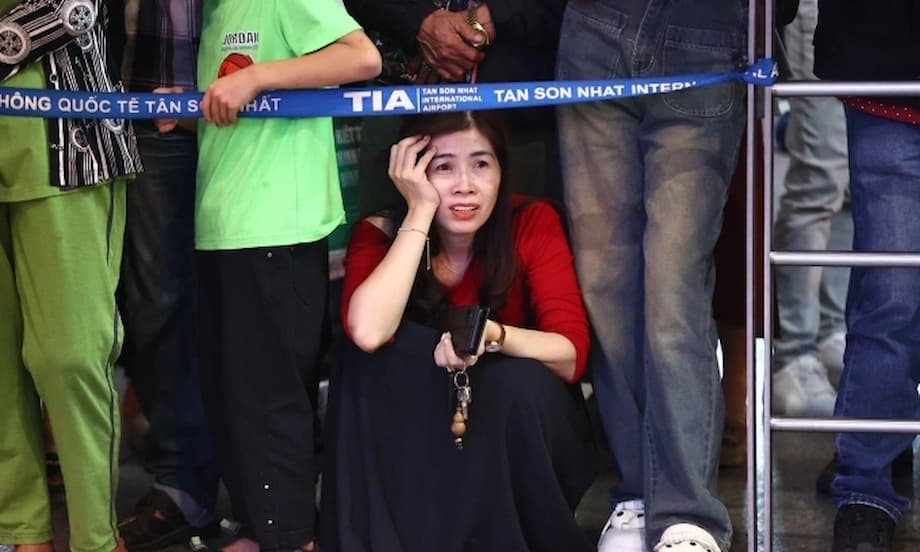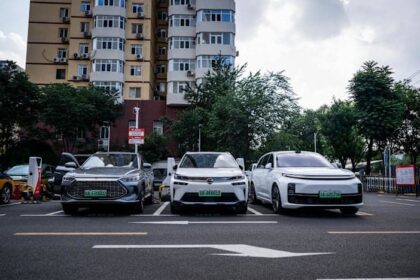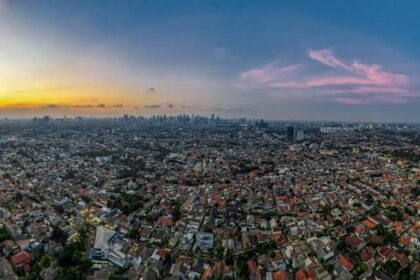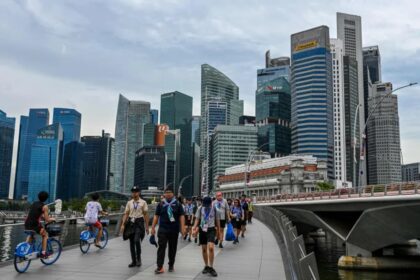Ho Chi Minh City’s Paradox: Global Magnetism Meets Airport Frustration
Ho Chi Minh City (HCMC) is a city on the rise, beloved by residents and admired by the world. In a recent global survey by the Gensler Research Institute, HCMC was ranked the second most magnetic city worldwide—ahead of Singapore, Sydney, and Vancouver—with 61% of respondents expressing a desire to build their future here. The city’s energy, opportunity, and warmth have made it a beacon for both locals and expatriates. Yet, for millions of travelers, the first and last impression of HCMC is not its vibrant streets or dynamic culture, but Tan Son Nhat International Airport—a facility that has become synonymous with congestion, delays, and frustration.
Why Tan Son Nhat Airport Became a Bottleneck
Tan Son Nhat is Vietnam’s busiest airport, serving as the main gateway to the country’s economic powerhouse. However, it has consistently struggled with overwhelming passenger volumes. Originally designed for far fewer travelers, the airport has been operating well beyond its intended capacity for years. According to academic analysis, the mismatch between infrastructure and demand has led to chronic congestion, long queues, and operational inefficiencies. The airport’s limitations are not just a matter of inconvenience—they have become a reputational risk for a city eager to project a modern, welcoming image.
Passenger Experiences: Voices From the Ground
Travelers’ stories echo the data. One international visitor recounted spending three hours in queues—1.5 hours at check-in, 45 minutes at immigration, and the remainder at security—barely making their flight despite arriving well in advance. Others have described sitting on planes for extended periods before takeoff, and paying exorbitant prices for basic amenities. These experiences are not isolated. In 2025, AirHelp, a global leader in flight compensation services, ranked Tan Son Nhat 248th out of 250 airports worldwide, citing poor on-time performance, negative customer opinions, and subpar food and retail services. As one traveler bluntly put it, “this was, I’ll be very honest, the worst airport I’ve ever been to.”
Systemic Challenges: Legal and Budget Constraints
Improving Tan Son Nhat has proven difficult, in part due to legal frameworks and budgetary limitations. Expanding or upgrading airport infrastructure in a densely populated urban area is a complex, expensive undertaking. The airport’s location, hemmed in by city development, leaves little room for physical expansion. These constraints have forced authorities to seek creative solutions, including the construction of a new airport and the modernization of existing facilities.
Terminal T3: A New Era for Domestic Travel?
In April 2025, Tan Son Nhat took a major step forward with the opening of Terminal T3, Vietnam’s largest domestic passenger terminal. Spanning 112,500 square meters across four above-ground levels and one basement, Terminal T3 is designed to handle 20 million passengers annually and up to 7,000 passengers during peak hours. The terminal features 90 traditional check-in counters, 20 self-service baggage drop counters, 42 automated check-in kiosks, 27 boarding gates, and 25 security screening points. Amenities include spacious waiting lounges, diverse dining and shopping options, free Wi-Fi, and dedicated VIP and business-class lounges.
The launch of Terminal T3 was timed to coincide with the 50th anniversary of the Liberation of the South, symbolizing HCMC’s ambitions for the future. Airlines such as Vietnam Airlines, VietJet Air, and Bamboo Airways have relocated their domestic operations to the new terminal, easing pressure on the older Terminal 1 and improving the overall passenger flow. The Civil Aviation Authority of Vietnam coordinated a smooth transition, with staff deployed to assist travelers and special policies implemented to support those unfamiliar with the new layout.
Technological Upgrades: Biometric Check-In and Digital Transformation
Terminal T3 is not just bigger—it’s smarter. The airport has introduced a biometric identification and digital authentication system integrated with the VNeID app, Vietnam’s national digital ID platform. Passengers can now check in online, verify their identity using facial recognition scanners, and bypass traditional document checks. Early feedback has been overwhelmingly positive, with travelers reporting that the process now takes just 10 to 15 minutes, compared to the previous 30 to 45 minutes. This move aligns Vietnam’s airport services with international standards and is part of a broader push to create a fully digital, paperless travel ecosystem.
Nguyen Vu Khuong Duy, a resident of Ho Chi Minh City, shared his experience: “The usual airport process would take 30 to 45 minutes, but with the new biometric solution, the entire procedure only takes 10 to 15 minutes, making it faster and more convenient.”
Security is also enhanced, as biometric systems ensure that only authorized individuals can access secure areas. Privacy concerns are addressed through strict data protection regulations and government oversight. The plan is to expand these technologies to other airports and processes, further streamlining the travel experience.
Accessibility and Connectivity: The Road to Terminal T3
Recognizing that airport congestion is not limited to terminal interiors, city authorities have invested in improving access to Terminal T3. The new Tran Quoc Hoan – Cong Hoa road, a four-kilometer route with a budget of over VND 4,800 billion, provides a direct connection between the terminal and major traffic arteries. This infrastructure is expected to reduce chronic traffic jams around the airport, making it easier for passengers to reach their flights on time.
Early Results: Has Terminal T3 Made a Difference?
After just one month of operation, Terminal T3 had already handled 1,464 flight movements and served over 355,000 passengers, significantly alleviating pressure on Terminal 1. The introduction of self-service kiosks, automated baggage drops, and e-gates has reduced queuing and allowed airline staff to focus on providing better support. Free shuttle buses connect Terminals 1, 2, and 3, and operational coordination among airport departments has been strengthened to address issues as they arise. While it is too early to declare victory, the initial signs suggest that Terminal T3 is a step in the right direction.
Premium Experiences: Upgrading Airport Lounges
For business and premium travelers, airport lounges are a key part of the journey. Recognizing this, Tan Son Nhat has partnered with international firms like Airport Dimensions and local providers such as SASCO to upgrade its lounge offerings. The refurbishment of the Rose Lounge and the introduction of specialized spaces like the Jasmine Halal Lounge and the Prime Lounge reflect a commitment to world-class service. These lounges offer not just comfort and privacy, but also unique cultural experiences and premium amenities, positioning HCMC as a competitive player in the regional aviation market.
Looking Ahead: The Long Thanh Solution
Despite these improvements, Tan Son Nhat’s fundamental challenge remains: it is simply too small for the volume of passengers it serves. To address this, Vietnam is building Long Thanh International Airport, located about 40 kilometers from downtown HCMC. Scheduled to open in 2026, Long Thanh will eventually take over all international flights, allowing Tan Son Nhat to focus on domestic routes. This strategy mirrors successful models in cities like Singapore, Kuala Lumpur, Shanghai, and Seoul, where international and domestic operations are split between different airports to optimize efficiency and passenger experience.
Some residents have expressed concern about the longer distance to Long Thanh, but authorities point out that improved expressways, metro lines, and high-speed rail will make the journey as fast—or even faster—than battling city traffic to reach Tan Son Nhat during peak hours. By the time Long Thanh opens, all major connecting infrastructure is expected to be in place, ensuring smooth access for travelers from HCMC and the broader southeastern region.
What Still Needs to Change?
Infrastructure upgrades are only part of the solution. As many experts and travelers have noted, service culture is equally important. Transparency, fairness, professionalism, and kindness can transform a stressful journey into a memorable experience. The introduction of digital technologies and modern amenities must be matched by a commitment to customer service at every level—from check-in staff to security personnel to retail vendors. Only then can HCMC’s airport truly reflect the city’s global reputation for hospitality and dynamism.
Expert Perspective: The Airport as a City’s Handshake
As one local commentator wrote, “An airport is the city’s handshake, its first smile, its welcome mat. When that moment is disappointing, it chips away at the trust and pride the city has worked so hard to build.”
For HCMC, the stakes are high. Every traveler who passes through Tan Son Nhat forms an impression that lingers long after they leave. The city’s momentum, ambition, and the love of its people deserve an airport worthy of that reputation.
In Summary
- Ho Chi Minh City is globally admired but has struggled with a poor airport reputation due to congestion and outdated facilities at Tan Son Nhat International Airport.
- Passenger frustrations have been fueled by long queues, delays, and high prices, earning the airport one of the lowest global rankings for passenger experience.
- The opening of Terminal T3 in 2025 marks a significant upgrade, with expanded capacity, modern amenities, and advanced technologies like biometric check-in.
- Early results from Terminal T3 are promising, with reduced congestion and improved passenger flow, but challenges remain as the airport still operates near capacity.
- Premium lounges and enhanced amenities are being introduced to attract business and international travelers.
- Vietnam plans to shift all international flights to the new Long Thanh International Airport by 2026, allowing Tan Son Nhat to focus on domestic travel and relieving congestion.
- Continued improvements in service culture and operational efficiency are essential to match HCMC’s global reputation with a world-class airport experience.












